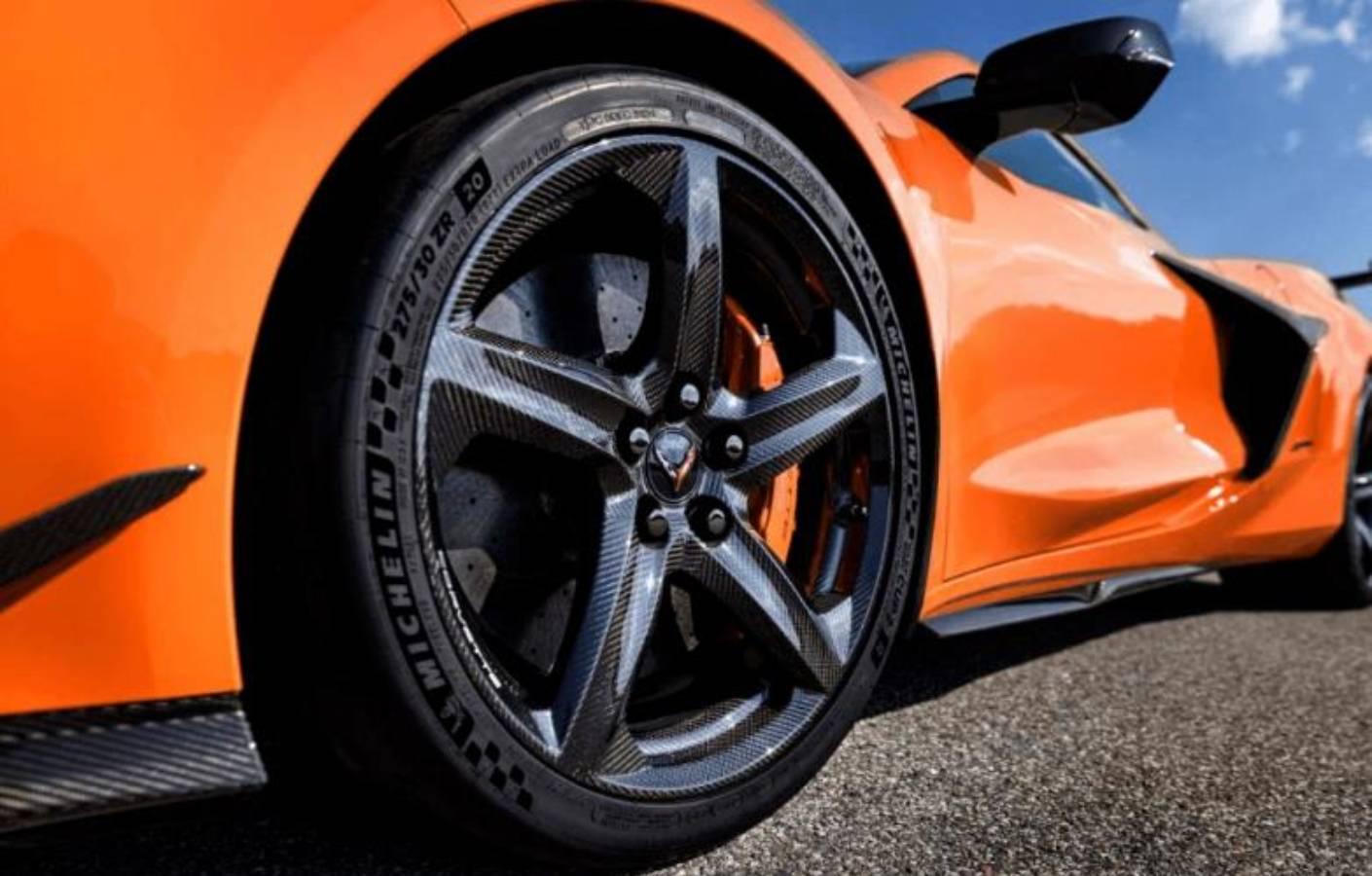Like powertrains, car bodies and components are constantly being upgraded and developed, this time with wheels. Sub-lightweight carbon fiber wheels have been approved by Ford, GM, and Porsche, but there are still many within the automotive industry at large who are skeptical of their future.
From Facebook commenters to famed race car designer Gordon Murray, the weight reduction is not enough to rationalize its outrageous cost in the eyes of most enthusiasts from the professional world - Ford's parts catalog shows that the Mustang Shelby GT500 uses carbon fiber of the wheels cost a whopping $7,390.57 individually. And they're too fragile and far less solid than traditional wheels to be adopted on a large scale in the real world.
Ash Denmead, director of engineering and design at Carbon Revolution, an Australian advanced materials development and vehicle engineering company, disagrees wholeheartedly with such skepticism. Not only does he see carbon fiber wheels as a heavyweight challenge to traditional alloy wheels, but he believes they can improve efficiency, making them a must-have for everything from electric cars to commercial trucks.
Today, many technological promises claim they will transform the automotive industry in the future, a "future" that is often uncertain and unknown. Denmead believes that the age of carbon fiber will come soon, probably within a few years.
 The carbon fiber wheels of Ford GT500 picture (Source: Ford)
The carbon fiber wheels of Ford GT500 picture (Source: Ford)
(1) The king of new materials: carbon fiber has excellent performance
Carbon fiber has the best performance among mass-produced fiber materials and is the highest strength material that can be used in large-scale engineering.
Carbon fiber composite material is a composite material formed by carbon fiber as reinforcement and resin, carbon, metal, and ceramic as the matrix, which has a wider range of applications while combining the excellent performance of reinforcement and matrix.
What are the technical advantages of composite materials? Carbon fiber materials not only have lightweight qualities but also help to further enhance the strength and stiffness of the wheel, achieving excellent vehicle performance.
1. Enhance safety: When the rim is subjected to severe impact, the carbon fiber weave layer breaks, thus forming a certain gap for the tire gas to be released gradually, which to a certain extent avoids the sudden tire blowout that may occur when the aluminum rim breaks.
2. Increased steering agility: Thanks to the 6 kg weight reduction and higher stiffness, the carbon fiber wheels provide a more stable and responsive steering experience compared to forged aluminum wheels.
3. Improved braking feedback: braking effectiveness is significantly improved thanks to the further reduction in unsprung mass.
4. Reduce tire wear: The high stiffness carbon fiber rim can effectively resist the effect of bending so that the wheel can maintain the maximum ground area and improve the overall stability of the vehicle.
(2) Weight reduction and increased range
Denmead's carbon fiber research and development are inextricably linked to Deakin University. Today Carbon Revolution's factory is located at Deakin University, and Denmead has led engineering research for the school's SAE (Society of Automotive Engineers International) Formula One team.
While at school, he and his partners used homemade fiberglass molds to lay down small 13-inch (33cm) wheels to improve the performance of the race cars they built from scratch. Their manufacturing capabilities grew in a short time and they were able to produce small batches of prototype wheels, some of which were used on their cars. Denmead says, "When I look back, I see that the finished product was pretty rough at the time."
The carbon Revolution has grown by leaps and bounds since that time. Today, they provide lightweight wheels for tens of thousands of cars across North America-from Ferraris and Porsches to the Ford Mustang Shelby GT500 and the 2023 Chevrolet Corvette Z06. While vehicle weight reduction is not a new topic for high-performance cars, it's a very limited market, and Denmead is beginning to warm up to the idea of extending carbon wheels to markets with even greater potential, such as electric vehicles.
"Reducing the size of the wheel has a multiplier effect compared to reducing the size of the rest of the car." Denmead explains, "using less energy to accelerate the wheel and less energy to slow it down when braking."
Less energy use immediately translates into a greater range. In turn, it effectively speeds up charging. And, because of its material properties, the weight advantage of carbon fiber is enhanced along with the progressive development of wheel designs that optimize dynamics.
"It is certainly possible to accomplish a truly aerodynamic wheel with metal. But then the wheel will become heavier." Denmead explains. This becomes particularly apparent with larger diameter wheels, such as the 24-inch (61cm) wheels on the Chevrolet Silverado electric car. And with the same size, wheels can weigh up to 45 percent less with carbon fiber, depending on how durable the customer wants them to be.
"With carbon fiber, the hollow section can have a very thin wall structure, and aerodynamic style and performance can be achieved without having to worry about weight. There is already customer interest in 24-inch (61cm) and 26-inch (66cm) wheels for use as standard equipment on the car." Denmead said.

Optional carbon fiber wheels on the 2023 Chevrolet Escort Z06 reduce unsprung mass by 41 pounds (18.6 KG) (Source: Chevrolet)
(3) Endless durability tests
Whether they've used them or seen them in the news, many people are no strangers to the little accidents that happen from time to time with deformed and cracked carbon fiber wheels.
When it comes to their durability, Denmead says it's a no-brainer: "Jake Dingle, CEO of Carbon Revolution, has a BMW 320d with self-developed wheels. He lives in Melbourne and drives 200km to the factory and back every day, and hasn't had any problems in five years."
Denmead emphasizes that there are currently about 40,000 carbon fiber wheels on the road in North America. This goes a long way to show that technology is at a largely mature stage.
Wheel manufacturers will set a series of standards for carbon fiber wheels, but of course, its wheels must meet that standard, and they'll also need to pass the automaker's sniff test. Because the automakers are the ones that need to be responsible for the owners if there are any problems.
Again, to put it another way, we all know those car companies are probably some of the most risk-averse businesses on the planet. If they didn't think the carbon fiber wheel was ready, the carbon revolution wouldn't be where it is today.
But the process has been long, in part because each wheel goes through a long design and testing process. The wheel manufacturer takes a proposed design and will simulate its performance against fatigue and impact, taking into account every factor possible that comes to mind, from the type of resin used to the direction of the carbon weave in each layer
(4) Price Trends
Denmead and his colleagues believe it is this performance-proven, OEM-backed technology that can make electric vehicles leaner and more environmentally friendly. The weight reduction of the carbon wheels is complemented by an aerodynamic design that may increase efficiency by about 5 percent. On an electric car with a range of 300 miles (483 km), you can get an additional 15 miles (24 km) of range just by replacing the wheels.
That seemingly insignificant 24 kilometers can be critical when you're that close to driving home or reaching the nearest charging station. And Dan Mead is equally optimistic about where the price of carbon fiber wheels is headed.
Jay Leno, a famous American talk show host, said in a video on his YouTube channel that these wheels used to cost $20,000 each, and a set of four wheels is $80,000. Denmead denied this: "There's never been a time when a set of wheels has cost $80,000. But the cost has come down considerably in the last 10 years."
The price is still going down, currently, a set of aftermarket carbon wheels are priced at around $12,000, and in four or five years, with increased volume production, they are expected to drop to a range that most consumers can accept, with a set as low as $2,000 possible.

Technicians working on a carbon fiber wheel (Source: TWITTER @CARBONREV)
Owners of cars equipped with carbon wheels often give this feedback, and when they try to introduce the tires to their friends around them, there is often little response. This seems to have been the case with people's acceptance of new things and a generally immature understanding of carbon fiber wheels.
The application of this energy-efficient technology has the potential to affect many industries. From personal transportation to shipping and fleets, making small but critical changes in global transportation energy consumption. Eventually, like too many examples in the long history of human development, technology will move relentlessly forward.
"This is the same situation that occurred years ago when the trucking industry switched from steel wheels to aluminum wheels. The technology is indelible and the savings and efficiencies are real, just like the owners who are already using carbon fiber wheels, and eventually, more people will discover how good it is. It's just a matter of time."
Contact Us
For further product information, please visit:
- Official website: https://www.lokithorshop.com/
- Facebook: https://www.facebook.com/Lokithorshop/
- Email address: info@lokithorshop.com
Recommend Reading: How Much Voltage Should A Car Battery Has?




Leave a comment
All comments are moderated before being published.
This site is protected by hCaptcha and the hCaptcha Privacy Policy and Terms of Service apply.